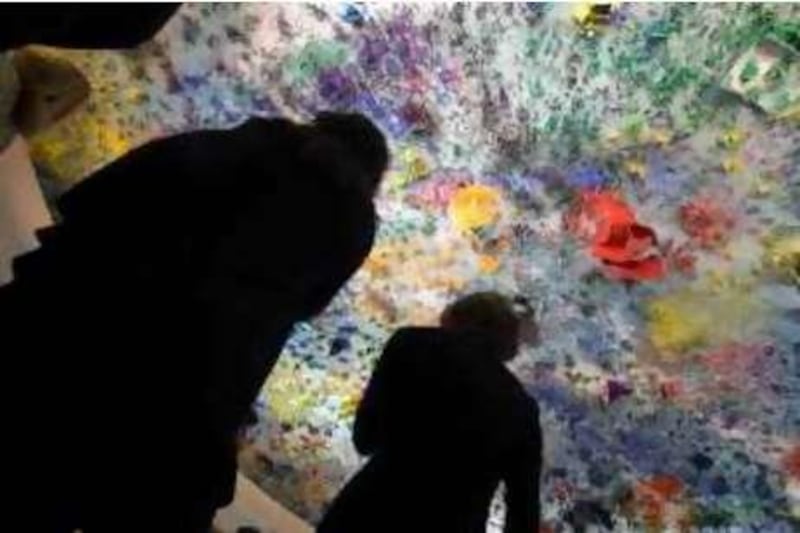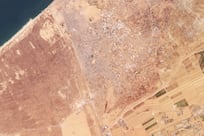NEW YORK // The United Nations has come under criticism following the unveiling of a US$23 million (Dh84.5m) abstract ceiling sculpture in the world body's Geneva premises that was partly funded with aid money. Ban Ki-moon, the United Nations secretary general, described the multicoloured marvel of stalactites dangling from the 1,500 sq m elliptic dome as "innovative and radiant" during this week's inauguration ceremony.
The work of the Spanish artist Miquel Barcelo that decorates the new Human Rights and Alliance of Civilisations Chamber in the UN's art-deco building near Lake Geneva has been praised as a 21st century Sistine Chapel. But this week's well-attended opening was followed with a rash of criticism over the substantial cost of spraying 35,000 kilograms of paint on to the ceiling while making the grotto-themed artwork.
"The fact that $23 million is being spent during a financial crisis and in the middle of a war in Congo is rather frivolous and sends out completely the wrong message," said Hillel Neuer, the executive director of UN Watch. Attacks grew fiercer when it emerged that the sculpture being gifted by Spain's government and private sector donors was partly drawn from funds earmarked for development aid.
The Spanish foreign ministry said the government is covering 40 per cent of the costs, with $633,000 of public funds coming from a budget for overseas development aid and such international organisations as the United Nations. Spain's conservative opposition Popular Party complained that this means money was being diverted from health care and poverty-reduction projects in developing countries, while ministry officials insist funding for Mr Barcelo's work was separate.
"Spending $23 million on its own is inappropriate - but this is an aggravated situation where some of the funds, according to a Spanish newspaper, come from money that is dedicated for starving children in Africa," Mr Neuer said. The Spanish newspaper ABC published an editorial piece calling for "maximum transparency" in the way public funds had been handled and demanding clarification of the "budgetary origin".
Criticism was then levelled at the United Nations for betraying its core principles by accepting the gift of a facelift for its Human Rights Council chamber at the expense of poverty-stricken populations. "The UN is completely sending out the wrong message. The world body doesn't have to accept everything it is offered - would the UN also accept money that came from blood diamonds?" Mr Neuer said.
During a press conference at UN headquarters, Farhan Haq, Mr Ban's spokesman, defended the organisation, saying officials were "not aware there was anything ? funny about" the Spanish gift when it was received. Mr Ban asserts the importance of imaginative decoration, describing it as a "metaphor of our work" because, like in international relations, entities must be perceived from all angles to be understood.
The circular chamber with a champagne-coloured carpet will host debates of the Human Rights Council and welcome a delegation from the UAE on Dec 4 when the Government faces a three-hour investigation on its record. Mr Barcelo, a spiky-haired abstract artist from Majorca, said he was inspired to create the dream-like decoration after spending a day roasting in the sunshine of the Sahel region of Africa. "I remember with the vividness of a mirage the image of the world dripping toward the sky," said the artist. "Trees, dunes, donkeys, multicoloured beings ? trickling drop by drop."
The artist worked with 20 assistants for more than a year on the project, fixing paint in icicle-like shapes to the ceiling with an industrial sprayer and enlisting the talents of architects and engineers to realise his vision. jreinl@thenational.ae * With additional reporting from Associated Press and Reuters







